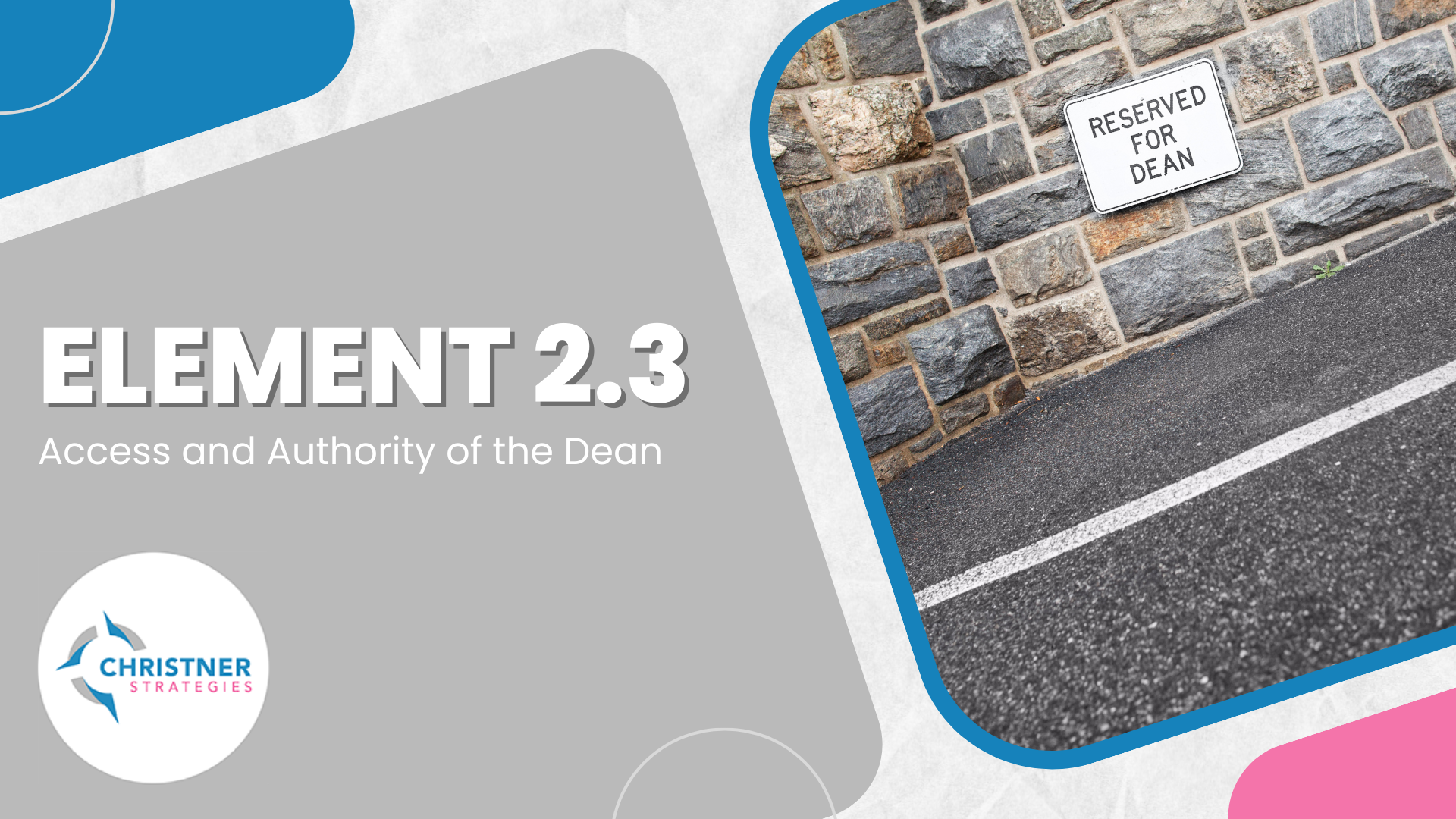Element 2.3 – Access and Authority of the Dean
The dean of a medical school has sufficient access to the university president or other institutional official charged with final responsibility for the medical school and to other institutional officials in order to fulfill decanal responsibilities; there is a clear definition of the dean’s authority and responsibility for the medical education program.
Hidden Curriculum
Changes in the medical school’s framework have been influenced by healthcare systems. Regardless of the specific organizational setup of a medical school, a crucial challenge lies in establishing a functional structure that enables the dean to engage with institutional officials, regardless of their respective positions in the organization and the dean’s position in the organizational structure. The ability for the dean to easily connect with these individuals is vital, as it is essential for discussions pertaining to the needs of medical education programs. Since funding for these programs originates from the dean, obtaining approval from officials becomes necessary for significant changes, making effective communication imperative.
Best Practice
The dean must be able to engage in discussions and planning regarding the medical education program’s needs with the administrators in both formal (organizational) and informal interactions, including access to the sponsoring organization and health system administrators. To establish formal access to these administrators, your school’s dean should participate in regular meetings with your institution’s President to address issues related to the medical education program and campus-wide initiatives if applicable. Additionally, your dean must have access to your school’s version of a Provost or Senior Vice President of Academic and Faculty Affairs through regular (e.g., bi-monthly) meetings, such as cabinet meetings, focusing on education cores like academic technologies, interactive delivery, and innovative instruction. If applicable, ensure both formal and informal access to institutional administrators by participating in regular standing and ad-hoc meetings with academic unit leaders (department chairs and center directors), vice chairs of education, the chief communications officer, deans of other schools within your institution, and others.
In conjunction with the leaders of academic units such as department chairs and center directors, your dean should ensure that all faculty actively participating in the medical education program are in good standing with their departments or centers and are meeting performance standards as medical educators. Make sure to have a reporting structure that ensures that your dean maintains authority over all the faculty participating in the medical education program.
Continuous Quality Improvement
Having a formal access to key administrators is key with this element. An organizational leadership chart illustrating the relationship of the medical school dean to parent institution administration, to the deans of other schools and colleges, and to the administrators of the health science center and affiliated teaching hospitals will be helpful to illustrate the dean’s opportunities to interact with these important administrators. In addition, your continuous quality improvement plan should aim to create a structured and effective framework to track examples where the dean engaged with administrators, (both formal and informal) to support the medical education program.
LCME In The News
Preclerkship Medical Students’ Use of Third-Party Learning Resources



0 Comments